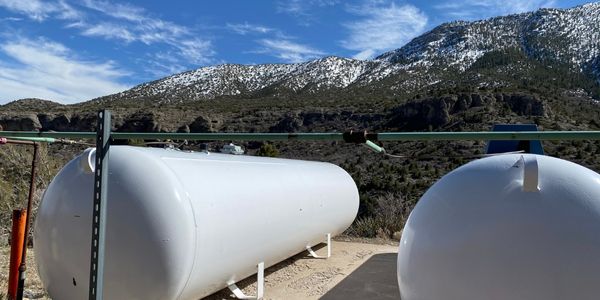Technology Category
- Application Infrastructure & Middleware - Event-Driven Application
- Platform as a Service (PaaS) - Application Development Platforms
Applicable Industries
- Finance & Insurance
- Marine & Shipping
Use Cases
- Leasing Finance Automation
- Retail Store Automation
About The Customer
Red River Bank is the sixth largest Louisiana-based community bank, providing a fully integrated suite of banking products and services tailored to the needs of commercial and retail customers. Since its founding in 1999, Red River Bank has grown to $2 billion in assets and 25 locations across Louisiana. The bank prioritizes business process improvements and is always on the lookout for integrated solutions that blend people and technology to enhance scalability, capacity, and efficiency. The bank's Chief Operations Officer, Jeff Theiler, oversees all aspects of bank operations and technology, including efforts to improve productivity with business process automation.
The Challenge
Red River Bank, the sixth largest Louisiana-based community bank, was faced with the challenge of rapidly processing and distributing Paycheck Protection Program (PPP) loans to support businesses during the COVID-19 pandemic. The U.S. Treasury had implemented the PPP and utilized banks to process and distribute the funds. Red River Bank needed a solution to onboard, process, and submit applications for Small Business Administration (SBA) approval. The bank was under immense pressure as the PPP funding was limited and would be exhausted before they could even get started. The business banking software providers they consulted with said their solutions would be ready at least one week after the government finalized PPP requirements, which was too long for Red River Bank.
The Solution
Red River Bank decided to build its own solution using the Nintex Process Platform, which included Nintex Forms, Nintex Workflows, and Nintex DocGen with a connector to DocuSign for electronic signatures. Aaron Nation, VP and Chief Data Officer at Red River Bank, designed an online application and workflow process using the Nintex Process Platform. Within thirty-six hours, Nation had refined his proof of concept using Nintex Workflow Cloud to capture information required in the Small Business Administration’s preliminary application, generate a loan application document, collect required documents, and overlay a web form so the customer could complete the required fields. The solution included a digital lender application form, Nintex connector to DocuSign for electronic signature, task assignments to the credit administration and loan operations departments, and integration with the bank’s loan tracking software through the Nintex Web Services Connector.
Operational Impact
Quantitative Benefit

Case Study missing?
Start adding your own!
Register with your work email and create a new case study profile for your business.
Related Case Studies.

Case Study
Real-time In-vehicle Monitoring
The telematic solution provides this vital premium-adjusting information. The solution also helps detect and deter vehicle or trailer theft – as soon as a theft occurs, monitoring personnel can alert the appropriate authorities, providing an exact location.“With more and more insurance companies and major fleet operators interested in monitoring driver behaviour on the grounds of road safety, efficient logistics and costs, the market for this type of device and associated e-business services is growing rapidly within Italy and the rest of Europe,” says Franco.“The insurance companies are especially interested in the pay-per-use and pay-as-you-drive applications while other organisations employ the technology for road user charging.”“One million vehicles in Italy currently carry such devices and forecasts indicate that the European market will increase tenfold by 2014.However, for our technology to work effectively, we needed a highly reliable wireless data network to carry the information between the vehicles and monitoring stations.”

Case Study
Drill ship power challenge: hybrid solution solves distribution issues
Aspin Kemp & Associates (AKA), a manufacturer of electrical power and control systems headquartered in Montague, PEI, encountered one with its hybrid power initiative, the first hybrid drill floor destined for installation on ultra-deepwater drill ships operated by Transocean, Swiss offshore drilling contractors. Since on-site modification was impossible and scrap recycling of any modifications was unacceptable, the enclosures had to arrive ready-to-install.

Case Study
Safety First with Folksam
The competitiveness of the car insurance market is driving UBI growth as a means for insurance companies to differentiate their customer propositions as well as improving operational efficiency. An insurance model - usage-based insurance ("UBI") - offers possibilities for insurers to do more efficient market segmentation and accurate risk assessment and pricing. Insurers require an IoT solution for the purpose of data collection and performance analysis

Case Study
Ensures Tanker Safety and Emissions Compliance
Storage tanks are irregular in shape and a certain amount of mathematical modelling is required to get an accurate representation of volume and, more importantly, the weight of material in each tank. In addition, countries have different emission regulations, so the ships position needed to be accurately known in order to geotag emission data.

Case Study
Smooth Transition to Energy Savings
The building was equipped with four end-of-life Trane water cooled chillers, located in the basement. Johnson Controls installed four York water cooled centrifugal chillers with unit mounted variable speed drives and a total installed cooling capacity of 6,8 MW. Each chiller has a capacity of 1,6 MW (variable to 1.9MW depending upon condenser water temperatures). Johnson Controls needed to design the equipment in such way that it would fit the dimensional constraints of the existing plant area and plant access route but also the specific performance requirements of the client. Morgan Stanley required the chiller plant to match the building load profile, turn down to match the low load requirement when needed and provide an improvement in the Energy Efficiency Ratio across the entire operating range. Other requirements were a reduction in the chiller noise level to improve the working environment in the plant room and a wide operating envelope coupled with intelligent controls to allow possible variation in both flow rate and temperature. The latter was needed to leverage increased capacity from a reduced number of machines during the different installation phases and allow future enhancement to a variable primary flow system.

Case Study
Automated Pallet Labeling Solution for SPR Packaging
SPR Packaging, an American supplier of packaging solutions, was in search of an automated pallet labeling solution that could meet their immediate and future needs. They aimed to equip their lines with automatic printer applicators, but also required a solution that could interface with their accounting software. The challenge was to find a system that could read a 2D code on pallets at the stretch wrapper, track the pallet, and flag any pallets with unread barcodes for inspection. The pallets could be single or double stacked, and the system needed to be able to differentiate between the two. SPR Packaging sought a system integrator with extensive experience in advanced printing and tracking solutions to provide a complete traceability system.



